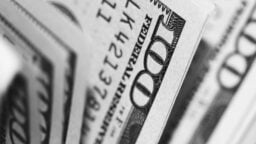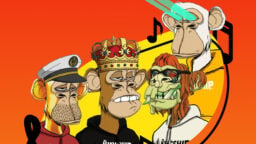Analysts at investment bank Jefferies predict that the NFT market will hit a $35 billion valuation in 2022. By 2025, they forecast that figure will top $80 billion.
In music, NFTs have rapidly evolved from relative obscurity over the past year-and-a-half to become part of the business’s everyday lexicon – and an increasingly serious revenue stream for artists.
In fact, NFTs are so prevalent and lucrative right now that a superstar act announcing that they won’t be releasing an NFT is becoming nearly as newsworthy as an NFT platform raising millions of dollars in investment.
One such platform is US-based electronic music-centric RCRDSHP, which has raised in excess of $5 million to date.
RCRDSHP’s seed round was supported by Dapper Labs, the Warner Music-backed blockchain firm which itself recently raised $250 million in new funding.
RCRDSHP’s seed round also attracted participation from prominent NFT collectors Metakovan and Twobadour (via PortKey Technologies), the pair of individuals who bought a $69 million digital art piece created by Beeple in March 2021. (Auctioned at Christies, that $69 million remains the highest price paid for an NFT so far.)
RCRDSHP launched in August 2021 with a drop of 5,555 “genesis packs”, made up of electronic and dance music digital collectibles. The drop sold out in a matter of hours, according to the company.
Speaking to MBW about RCRDSHP’s origins, founder Obie Fernandez says that he had been “playing with crypto for years, and was briefly obsessed with CryptoKitties so I was aware that NFTs represented a big technological shift in the making”.
Inspired by the success of Dapper Labs’ popular sports-focused digital collectables platform NBA TopShot – which has seen more than $780 million in collectibles bought and sold on its platform – Fernandez foresaw that creating something similar but for music “had a good chance of success”.
While most other NFT marketplaces are based on auctions or fixed-price sales, RCRDSHP curates and releases digital ‘packs’ of content. These packs contain everything from music tracks to mixtapes, video clips, static visuals, and other multimedia collectibles.
With a platform built on the Flow blockchain, RCRDSHP says that so far it has worked with both established and upcoming DJs, as well as producers, labels, festivals organizers, clubs, event promoters, visual artists, and other “denizens of the dance music world”.
RCRDSHP’s latest innovation is RCRDSHP Studio, which sees artists create tracks in live sessions, with participating fans able to vote on the direction of the music as it’s made.
After mastering, the track and related media is issued as an NFT, with participating fans getting a co-production credit on the release.
Each of these fans, as well as the artist/s, then get sent NFTs that RCRDSHP says “they can treasure or sell… a unique collectible that honors a unique co-creation experience”.
To help launch Studio, RCRDSHP teamed up with New York-based dance music duo Disco Fries; some 250 of the duo’s fans recently voted on the musical direction of a new track as it was being created during a two-hour RCRDSHP Studio session.
Here, MBW chats with RCRDSHP founder Obie Fernandez about the platform, RCRDSHP Studio, the future of the NFT market and the potential impact that Web3 could have on the music industry…
RCRDSHP closed a multi-million dollar investment round in September, supported by prominent NFT collectors. What can you tell us about this round and who was involved?
We had several dozen angels and funds involved, but our biggest investors include Dapper Labs and their CEO Roham [Gharegozlou], who really believed in our vision for creating the most technologically advanced and musician friendly platform on their Flow Blockchain.
We also got massive support from Metakovan, who made headlines with his record-setting purchase of that Beeple NFT last year.
Beyond that a number of other fairly high-profile investors include Tobi Lutke, the billionaire CEO and Founder of Shopify, and EDM artists such as Gareth Emery and Tiga.
How competitive is The NFT market getting for raising investments?
I can’t answer that since our seed round was filled out and oversubscribed fairly quickly last autumn. But there’s definitely a lot of heat in this sector, with what seems like a new music-crypto project springing up every day.
I think what really sets RCRDSHP apart from competing projects in the eyes of our investors is how authentic we are about supporting working musicians that have been hit hardest during the pandemic.
We see what’s happening with NFTs in terms of what they’re going to enable over the next 5-10 years and that approach makes us design our product offering in ways that are more appealing to artists and fans than your typical crypto project.
Tell us about RCRDSHP Studio. What is it and how does it work for artists and for fans?
RCRDSHP Studio is where artists come to engage with fans via live-streaming on RCRDSHP’s Twitch channel. Opportunities include interviews, sets, and Participate-To-Create challenges.
With all of this, Participate-To-Create is a new initiative that enables artists and fans to collaborate in the creative process. This experience leverages creativity, community, and real-time fan engagement.
Via RCRDSHP Studio, RCRDSHP wants to deliver “Other experiences of ownership/engagement that are more exciting than micropennies from streams” – Could you tell us about the thinking behind this?
For the majority of music fans, their passion and interest in music isn’t usually driven by ideas of speculation, most want to simply be closer to the artists and music they love.
“It’s hard to conceive that most music fans want to speculate in a stock market for the music world.”
Fan experiences enabled by Web3 and NFT technologies that reward fans in this way are a perfect use case for this technology. It’s hard to conceive that most music fans want to speculate in a stock market for the music world.
What are your views on artists selling NFTS that give fans fractional ownership of their music/ a percentage of the artist’s streaming royalties?
It’s just kicking the can down the road and passing the fundamental issues in the underlying economics of streaming to the fans rather than actually solving the fundamentals.
As we move down the road towards wider Web3 adoption this is going to become an issue as music fans realize this.
What differentiates RCRDSHP from other NFT platforms?
RCRDSHP is fundamentally a fan experience platform. We are not creating a version of an artist web merch store filled with expensive JPEG’s. RCRDSHP collectibles are rich and immersive media experiences that let artists express themselves and communicate with their fans in a way other formats don’t allow for.
“RCRDSHP is fundamentally a fan experience platform.”
We are building programs of Rewards with 100’s of artists that give fans both digital and IRL value for engaging with the music that they love.
With Challenges and platforms like RCRDSHP STUDIO we are giving independent artists compelling ways to play around with new marketing ideas in the emerging Web3 space. Fundamental to this is our philosophy in reducing the complexity for both Creators and music fans.
It’s why Collectibles are priced in dollars. Even though you can buy in crypto if you want to, we want to appeal to the widest possible audience as they learn and get used to supporting their artists in this new way.
How sustainable is the NFT market and particularly the secondary marketplace for NFTs?
I guess we’re in the process of finding out, right? The thing that most outsiders don’t necessarily get about the NFT space is that we’re super early in the adoption cycle.
There’s maybe a million or two people worldwide that are into NFTs in any significant way, so even though there will be ups and downs along the way, there still so much potential growth left before we reach a point of saturation.
What are your predictions for music’s web3 future?
As awareness grows that projects like RCRDSHP operate on “green” energy-efficient networks such as Flow Blockchain, more and more music fans will get hooked on this new way of interacting with their favorite fans. That connection is what it’s all about, and the artists that lean into the new engagement model enthusiastically are the ones that are going to come out way ahead of the game.
“The artists that lean into the new engagement model enthusiastically are the ones that are going to come out way ahead of the game.”
As an artist, you really have to see Web3 as more than just a glorified fan club for the 21st-century. It’s more like you’re the CEO of your own little corporation, with super fans as the shareholders.
Believe me that’s a radical and scary thought for many artists, but what we’ve seen in practice is that it can also be very fun and rewarding.
What are the biggest challenges in the Music NFT sector?
The biggest challenge just comes to most people’s aversion to change. Artists need to embrace this radically different way to engage with fans.
DJ/Producers of course have a head start since they’ve been experimenting heavily with this model during pandemic using platforms such as Twitch, but that was free for fans.
The question is whether the average fan will want to get more heavily involved on their end if it means they’re spending more money than what they’re used to lately (with Spotify and YouTube being practically free.)
Where are the biggest opportunities in the NFT sector and how big can the music NFT sector get?
The identity of tomorrow’s thought leaders in the space is being defined right now. Artists willing to take a risk and do the hard work of engaging their fans with the new mechanisms available in the NFT space are going to pull out ahead of their peers and establish an enviable position in the years to come.Music Business Worldwide





